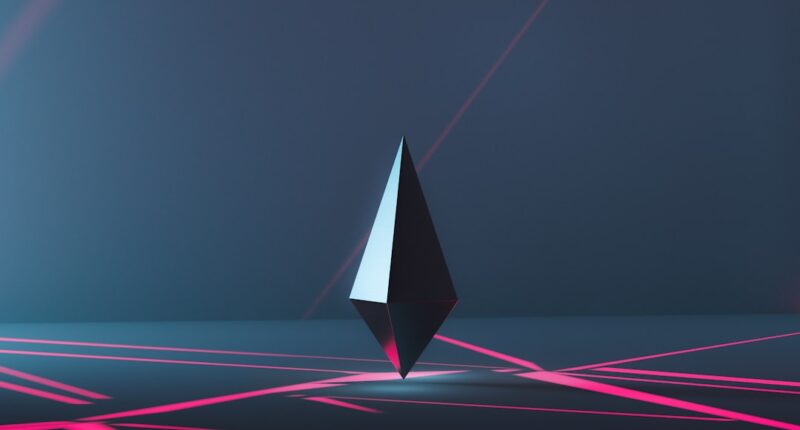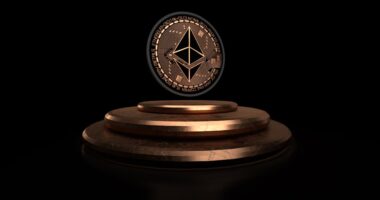NFT stands for non-fungible token, which is a digital asset that represents ownership or proof of authenticity of a unique item or piece of content using blockchain technology. An NFT artist is someone who creates digital artwork and sells it as NFTs on various online platforms. These artists use their creativity and digital skills to produce unique and original pieces of art that can be bought and sold in the form of NFTs. NFT art can take many forms, including digital paintings, animations, music, videos, and more. The appeal of NFT art lies in its scarcity and authenticity, as each piece is tokenized and cannot be replicated or replaced, making it a valuable asset in the digital world.
NFT artists are at the forefront of the digital art revolution, leveraging blockchain technology to create and sell their work in a decentralized and secure manner. They are trailblazers in the art world, pushing the boundaries of what is possible with digital art and challenging traditional notions of ownership and value. As the demand for NFT art continues to grow, NFT artists are gaining recognition and influence in the art community, attracting collectors, investors, and enthusiasts from around the world. The rise of NFT art has opened up new opportunities for artists to showcase their talent and reach a global audience, while also redefining the concept of ownership and provenance in the digital age.
Key Takeaways
- An NFT artist creates digital artwork that is tokenized and sold on the blockchain.
- NFT artists play a crucial role in driving innovation and creativity in the crypto industry.
- Skills and qualifications required for NFT artists include digital art proficiency, knowledge of blockchain technology, and understanding of the NFT marketplace.
- To get started as an NFT artist, one can create and tokenize their artwork, build a strong online presence, and engage with the NFT community.
- NFT art careers present both challenges, such as copyright issues, and opportunities, such as global reach and new revenue streams.
The Role of NFT Artists in the Crypto Industry
NFT artists play a crucial role in the crypto industry by driving innovation and creativity in the digital space. Their work not only adds value to the blockchain ecosystem but also showcases the potential of blockchain technology in revolutionizing the art market. NFT artists are pioneers in exploring the intersection of art and technology, creating a new paradigm for ownership and distribution of digital art. By tokenizing their work as NFTs, artists are able to establish provenance, ensure scarcity, and enable secure transactions on the blockchain, thereby transforming the way art is created, bought, and sold.
In addition to their artistic contributions, NFT artists also contribute to the broader adoption and acceptance of cryptocurrencies and blockchain technology. Through their engagement with NFT marketplaces and crypto communities, they are helping to bridge the gap between traditional art world and the crypto space, introducing a new audience to the benefits and possibilities of blockchain-based assets. As ambassadors for digital art and blockchain innovation, NFT artists are shaping the future of the crypto industry by demonstrating the real-world applications of NFTs and inspiring others to explore the potential of this emerging technology.
Skills and Qualifications Required for NFT Artists
Becoming a successful NFT artist requires a unique blend of artistic talent, technical skills, and business acumen. While there are no formal qualifications or specific educational requirements for NFT artists, there are certain skills and attributes that can contribute to their success in this field. Firstly, a strong foundation in traditional art techniques and principles is essential for creating compelling and original artwork. Whether it’s painting, drawing, sculpting, or digital design, having a solid understanding of artistic fundamentals can set NFT artists apart and help them develop their own distinctive style.
In addition to artistic skills, NFT artists also need to be proficient in digital tools and software for creating and editing digital art. This may include graphic design software, 3D modeling programs, animation tools, and other digital platforms that are commonly used in creating NFT artwork. Familiarity with blockchain technology and cryptocurrency is also beneficial for NFT artists, as it allows them to navigate the technical aspects of tokenizing their art and participating in the crypto marketplace. Finally, strong communication and marketing skills are important for promoting and selling NFT art, as artists need to engage with collectors, investors, and potential buyers to showcase their work and build a following in the NFT community.
How to Get Started as an NFT Artist
| Steps | Description |
|---|---|
| 1 | Choose a blockchain platform for your NFTs (Ethereum, Binance Smart Chain, etc.) |
| 2 | Create a digital wallet to store and manage your NFTs |
| 3 | Produce high-quality digital artwork or content for your NFTs |
| 4 | Learn about NFT marketplaces and choose the right one for your work |
| 5 | Set up accounts on chosen NFT marketplaces and follow their guidelines for listing |
| 6 | Promote your NFTs through social media and other marketing channels |
| 7 | Engage with the NFT community and build a network of supporters |
Getting started as an NFT artist involves a combination of creative expression, technical know-how, and entrepreneurial spirit. The first step for aspiring NFT artists is to develop their artistic skills and create a portfolio of original digital artwork that showcases their talent and vision. This may involve experimenting with different mediums, styles, and techniques to find their niche in the digital art world. Once they have a body of work that they are proud of, artists can explore various online platforms that specialize in NFT art, such as OpenSea, Rarible, or Foundation, to mint and list their artwork as NFTs.
In addition to creating and selling artwork, networking with other artists and engaging with the NFT community can help aspiring NFT artists gain visibility and support for their work. Participating in online forums, social media groups, and virtual events dedicated to NFT art can provide valuable insights, feedback, and opportunities for collaboration within the community. Building a strong online presence through social media platforms like Twitter, Instagram, or Discord can also help artists connect with potential buyers and collectors who are interested in acquiring NFT art. By actively participating in the NFT ecosystem and staying informed about industry trends and developments, aspiring NFT artists can position themselves for success in this rapidly evolving field.
Challenges and Opportunities in NFT Art Careers
While the rise of NFT art presents exciting opportunities for artists to showcase their work on a global stage and earn income from their creations, it also comes with its own set of challenges. One of the main challenges for NFT artists is navigating the complexities of blockchain technology and understanding the technical aspects of minting, selling, and managing NFTs. This may require artists to invest time in learning about cryptocurrency wallets, gas fees, smart contracts, and other technical considerations that are integral to participating in the NFT marketplace.
Another challenge for NFT artists is establishing themselves in a competitive market where thousands of artists are vying for attention and recognition. Standing out in a crowded space requires artists to not only create exceptional artwork but also to build a strong personal brand, engage with their audience, and differentiate themselves from others in the field. Additionally, as with any emerging industry, there is a degree of uncertainty and volatility in the NFT market that artists need to navigate. Fluctuations in cryptocurrency prices, changes in platform policies, and evolving consumer preferences can all impact an artist’s success in selling their NFTs.
Despite these challenges, there are numerous opportunities for NFT artists to thrive in this dynamic industry. The decentralized nature of NFTs allows artists to bypass traditional gatekeepers and intermediaries in the art world, giving them greater control over their creative output and financial independence. The global reach of NFT marketplaces enables artists to connect with collectors from around the world and build a diverse fan base for their work. Furthermore, the potential for royalties from secondary sales of NFTs provides long-term earning potential for artists as their work appreciates in value over time. By embracing these opportunities while addressing the challenges that come with it, NFT artists can carve out successful careers in this burgeoning field.
Navigating the NFT Marketplace as an Artist

Navigating the NFT marketplace as an artist involves understanding the dynamics of buying and selling digital assets on blockchain platforms while also building relationships with collectors and enthusiasts within the community. Artists need to familiarize themselves with different NFT marketplaces and understand their unique features, fee structures, and audience demographics to determine which platforms align with their artistic goals and target audience. Each marketplace has its own set of guidelines for minting and listing NFTs, so artists should carefully review these requirements before uploading their artwork.
Once an artist has listed their NFTs for sale, they need to actively promote their work through various channels to attract potential buyers. This may involve leveraging social media platforms to showcase their artwork, engaging with collectors through online forums or virtual events, or collaborating with other artists on joint projects or exhibitions. Building a strong network within the NFT community can help artists gain visibility for their work and establish themselves as reputable creators within the space. Additionally, maintaining transparency and authenticity in their interactions with buyers is crucial for building trust and credibility as an artist in the NFT marketplace.
As artists navigate the complexities of the NFT marketplace, they should also stay informed about legal considerations related to copyright, licensing, and intellectual property rights for their digital artwork. Understanding these legal aspects can help protect artists from potential disputes or infringements related to their NFTs. By staying informed about industry best practices and seeking legal counsel when necessary, artists can safeguard their creative assets while maximizing their opportunities for success in the NFT marketplace.
Future Trends and Developments in NFT Art Careers
The future of NFT art careers is filled with exciting possibilities as technological advancements continue to reshape the way art is created, consumed, and valued. As blockchain technology evolves, we can expect to see new innovations that enhance the functionality and utility of NFTs for artists. This may include advancements in decentralized storage solutions for large-scale digital artworks, improvements in interoperability between different blockchain networks to facilitate cross-platform transactions, or developments in smart contract functionality that enable more complex royalty structures for creators.
Furthermore, as mainstream adoption of cryptocurrencies grows, we may see increased integration of NFTs into traditional art markets and institutions. This could open up new avenues for collaboration between established art galleries, museums, and auction houses with emerging NFT artists, leading to greater recognition and validation of digital art within the broader art world. Additionally, advancements in virtual reality (VR) technology may create new opportunities for immersive experiences that showcase NFT artwork in virtual galleries or interactive environments.
The growing interest in environmental sustainability within the crypto industry may also influence future trends in NFT art careers. As concerns about energy consumption associated with blockchain networks continue to be addressed, we may see a shift towards more eco-friendly solutions for minting and trading NFTs. This could lead to the development of carbon-neutral blockchain protocols or alternative approaches to tokenization that minimize environmental impact while supporting sustainable practices within the NFT art community.
In conclusion, NFT artists play a pivotal role in shaping the future of digital art by leveraging blockchain technology to create unique and valuable assets that resonate with collectors worldwide. By honing their artistic skills, embracing technological innovation, navigating the complexities of the NFT marketplace, and staying attuned to future trends in the industry, NFT artists can position themselves for long-term success in this dynamic field. As the landscape of digital art continues to evolve, so too will the opportunities for NFT artists to make their mark on this transformative industry.
Looking to learn more about the world of NFTs and the job opportunities within it? Check out this insightful article on NFT-Jobs.com that provides a comprehensive overview of the evolving landscape of NFTs and the potential career paths for artists and creators. Whether you’re a seasoned NFT artist or just starting out, this article offers valuable insights into the industry and the various roles available. Dive into the article here to gain a deeper understanding of the NFT job market and how you can carve out your niche in this exciting space.
FAQs
What is an NFT artist job description?
An NFT artist creates digital artwork that is then tokenized and sold as non-fungible tokens (NFTs) on blockchain platforms. This job involves creating unique and original digital art pieces that can be bought and sold as NFTs.
What are the responsibilities of an NFT artist?
The responsibilities of an NFT artist include creating digital artwork, understanding blockchain technology and NFT marketplaces, marketing and promoting their NFTs, and managing the sales and distribution of their NFTs.
What skills are required to become an NFT artist?
Skills required to become an NFT artist include proficiency in digital art creation using software such as Adobe Photoshop, Illustrator, or Procreate, knowledge of blockchain technology and NFT marketplaces, marketing and promotional skills, and an understanding of intellectual property rights.
What is the earning potential for NFT artists?
The earning potential for NFT artists can vary widely depending on the popularity and demand for their artwork. Some NFT artists have earned significant amounts from the sale of their NFTs, while others may struggle to find buyers for their work.
What are the challenges of being an NFT artist?
Challenges of being an NFT artist include navigating the rapidly evolving NFT market, finding a niche and audience for their artwork, dealing with intellectual property and copyright issues, and managing the fluctuating value of NFTs.





